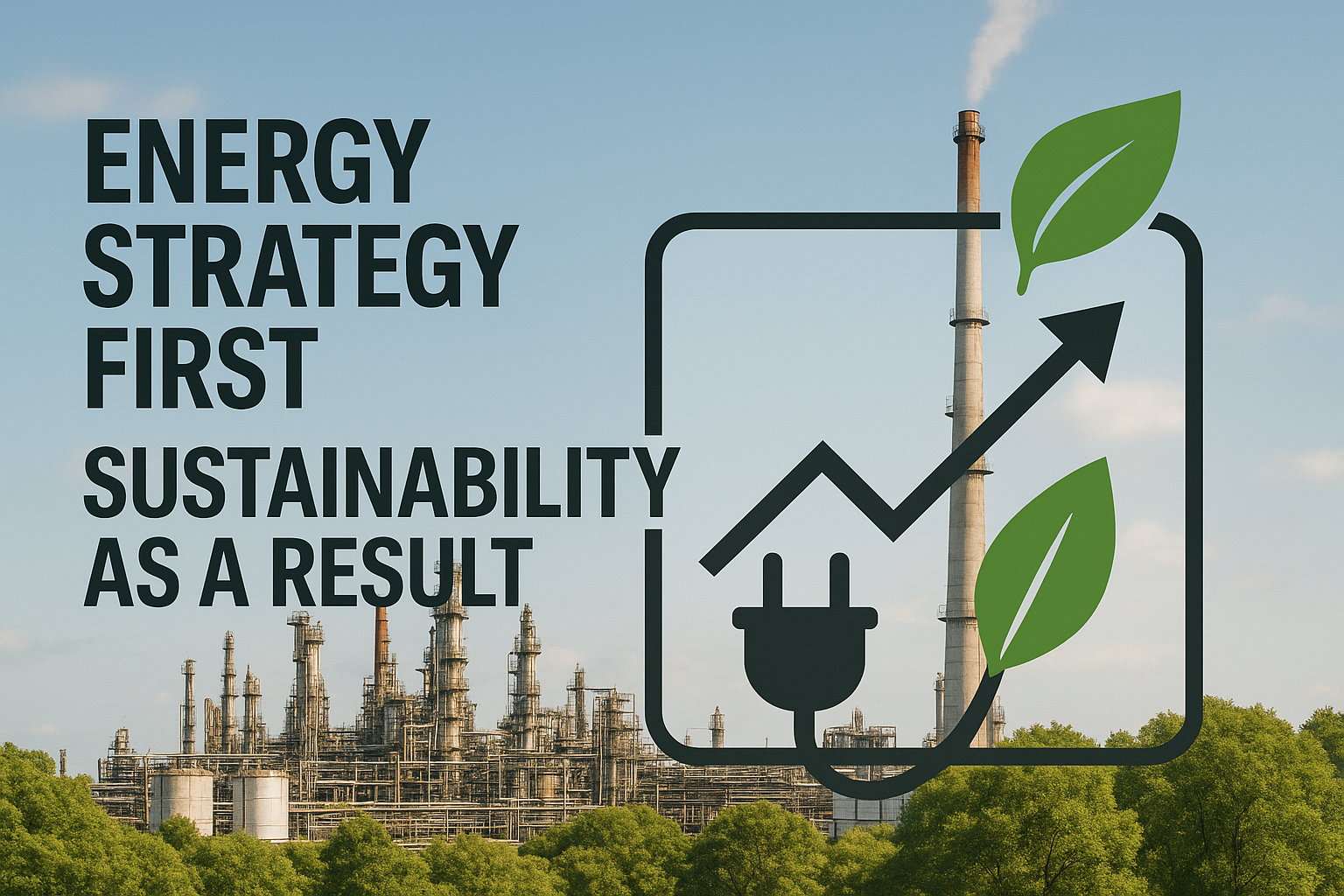In process industries, barriers to artificial intelligence adoption are often rooted in misconceptions surrounding cost and return on investment. According to recent surveys, lack of internal expertise and integration challenges rank as the top deterrents for companies considering AI integration. Meanwhile, 54% of early-career employees say that access to AI would influence their choice of employer.
This hesitancy carries real consequences. Misunderstandings about financial implications frequently delay crucial advancements in optimization and decarbonization efforts, stalling progress toward more efficient and sustainable operations.
The need to clarify cost-related myths surrounding artificial intelligence is critical, as doing so could accelerate the implementation of initiatives vital for both operational excellence and environmental responsibility.
We’ll examine five pervasive myths blocking adoption, breaking them down to reveal underlying truths. You’ll discover how modern advancements have made AI more accessible and financially viable for process industry leaders, and why moving past these misconceptions can be pivotal for your organization’s future.
Why Cost Myths Persist
Cost ranks as the single biggest obstacle to industrial AI adoption, even ahead of data readiness or change management, according to our latest Workforce Transformation Survey. You might share that concern, especially when every headline trumpets billion-dollar experiments at consumer-tech giants.
Those high-profile stories create a skewed reference point that overshadows reality: cloud-based platforms and pay-as-you-go models have substantially reduced and shifted the capital burden, making upfront investments more manageable but not fully eliminating them.
Many front-line operations still overestimate required spend, a misconception reinforced by decades of CapEx-heavy project planning.
Vendor communication gaps compound the issue. When proposals lump integration, support, and model maintenance into broad line items, it’s easy to assume hidden costs will spiral. Modern partners now publish transparent ROI frameworks, yet those details often stay within IT circles and never reach the front-line operations that control budgets.
Early proofs of concept that ran over budget left lasting scars, with those stories sticking harder than subsequent successes. Until these myths are challenged, plants postpone optimization and emissions-reduction opportunities that could pay for themselves quickly—perpetuating the very cost pressure they’re trying to avoid.
Myth #1 – “AI Implementation Requires Massive Up-Front Infrastructure Investment”
You might picture rows of new servers, upgraded networks, and a budget line that rivals a new unit build. It’s a perception reinforced by headlines about tech giants pouring billions into bespoke data centers. Yet many organizations dramatically overestimate the price tag, often because they assume those same hyperscale requirements apply to their plants.
The reality looks very different. Modern cloud and SaaS platforms let you rent exactly the computing power you need and turn it off when you don’t, wiping out the capital expense of buying and maintaining on-premise hardware. Subscription models further convert spending to OpEx, improving flexibility and cash flow while still providing access to advanced capabilities.
Because AI optimization solutions work on top of existing distributed control systems (DCS) tags and historians, you can layer optimization on top of current controls rather than replace them entirely. Edge devices handle latency-sensitive tasks locally, so only aggregated data travels to the cloud, further trimming infrastructure needs.
Most importantly, with AI, revenue growth doesn’t come from buying more equipment—it comes from getting more value out of what you’ve already invested in. Instead of building new units or overhauling entire systems, companies can unlock hidden efficiency, increase throughput, and reduce energy costs using the infrastructure already in place. It’s a shift in mindset: smarter, not bigger.
The lesson is clear: start with a targeted pilot that plugs into what you already own. Let incremental results fund the next phase instead of waiting for a top-down, multi-million-dollar infrastructure overhaul that may never come.
Myth #2 – “You Need a Team of AI Specialists Before Starting”
You might feel that a successful program demands an army of data scientists, engineers, and technical architects on day one, and with talent premiums soaring, those head-count projections can look daunting. This fear is so widespread that it sits alongside other common misconceptions, holding process industries back.
In practice, the expertise gap is bridged through vendor partnerships that embed their specialists alongside your process engineers, transferring know-how while delivering early results. Cross-functional teams target focused problems, say, minimizing giveaway in a distillation column, then let external experts handle model building as internal engineers validate recommendations against plant constraints.
Because you’re solving a high-value operational issue, the project quickly showcases impact and makes your site more appealing to the next generation of technical talent, the same workers who say adoption influences where they work.
A typical first year unfolds in three phases: vendor-led discovery, a hybrid execution phase where internal champions start owning models, and finally steady-state operations with the vendor on call.
As you evaluate staffing, look for operators and engineers already comfortable with data analysis; their domain intuition accelerates model tuning and safeguards operational credibility. Focus on the business problem first; the specialized skills will scale organically as the wins accumulate.
Myth #3 – “AI Projects Always Blow the Budget Due to Hidden Costs”
This fear stems from early, poorly scoped projects that left teams scrambling to fund surprise integration work or escalating support fees. The reality is that modern industrial automation has matured significantly.
Up-front diligence prevents the scope creep that destroys budgets. A short pre-implementation assessment surfaces data-quality gaps and interface requirements before contracts are signed, keeping timelines realistic and costs predictable.
When you pair these safeguards with clear economic objectives, such as reducing energy costs by a set percentage, budget conversations stay grounded in business value rather than technical wishlist items.
Effective cost-control measures include requesting itemized pricing that covers licenses, training, and ongoing support; defining two or three success metrics the finance team can validate; scheduling budget reviews at each project milestone; and including model maintenance in the initial ROI calculation.
Handled this way, an implementation becomes a contained investment, not an open-ended risk. You can focus on the returns rather than worrying about the fine print.
Myth #4 – “ROI Takes Years to Materialize”
You operate under quarterly scrutiny, so anything that pays back “eventually” feels like a luxury. That pressure fuels the notion that industrial automation demands multi-year patience before value appears. Real-world deployments tell a different story, with case studies in process plants showing operational cost reductions of 5–30 percent with payback in months when projects target a single high-impact constraint.
Energy optimization models start shaving fuel bills almost as soon as they begin writing set points. Advanced solutions prevent the first unplanned outage within a quarter, while smarter quality control cuts giveaway from the first production run.
A typical fast-track timeline includes connecting historians, mapping tags, and validating data integrity in months 1-2; deploying the model in advisory mode and quantifying early savings in months 3-4; and closing the loop, expanding to adjacent units, and booking measurable financial impact in months 5-6.
Every month you postpone implementation means avoidable energy loss, excess rework, and throughput left on the table—costs that compound far faster than any upfront investment.
Myth #5 – “Small to Mid-Size Plants Can’t Afford AI”
You might hear that industrial automation is a luxury only large enterprises can justify. The logic sounds simple: bigger facilities spread fixed costs across higher volumes, so the return looks better. Yet that view ignores how modern offerings have changed the math.
Subscription-based platforms erase most capital outlays and let you pay only for what you use. Pricing tiers scale with production volume, so both large refineries and specialty chemical plants get exactly what they need, nothing more. Analysts tracking deployments show that smaller operations often capture a larger percentage of savings because baseline optimization is limited.
Smaller plants move faster, too. A lean organization can move from pilot to live control in weeks, converting quick wins—energy trimming, off-spec reduction—into measurable cash. If budgets are tight, consortium purchasing or usage-based licenses spread expenses even further.
The takeaway is clear: scale is no longer the gatekeeper; the right use case is.
The True Cost of Inaction
Delaying your program doesn’t freeze costs; it compounds them. Every day, a unit runs a few points off optimum, fuel and steam bleed away, and unnecessary CO₂ is vented. Quality drift triggers giveaway, and small anomalies still snowball into costly shutdowns. Targeted deployments routinely unlock double-digit cost reductions, so each month of inaction burns money you could be saving.
Talent costs rise, too. Our Workforce Transformation Survey found 91% of young engineers weigh a plant’s digital maturity when choosing where to work. Hesitation pushes the next generation toward more technologically advanced competitors and widens the knowledge gap as veterans retire.
Consider a modest $50,000 in avoidable energy spend each month. That becomes $600,000 in just one year—enough to fund several pilots and cover follow-up expansion. Stretch those losses over three years, and they top $1.8 million, before counting downtime or giveaway. Meanwhile, faster adopters reinvest savings and accelerate past you.
It doesn’t have to play out that way. Imubit’s Closed Loop Optimization solution converts those hidden leaks into rapid, verifiable improvements. Get a complimentary Plant assessment and see exactly what waiting is costing you.




